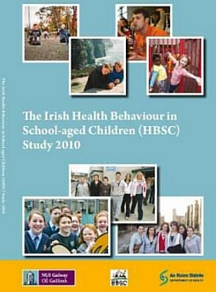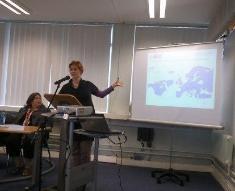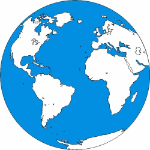-
Courses

Courses
Choosing a course is one of the most important decisions you'll ever make! View our courses and see what our students and lecturers have to say about the courses you are interested in at the links below.
-
University Life

University Life
Each year more than 4,000 choose University of Galway as their University of choice. Find out what life at University of Galway is all about here.
-
About University of Galway

About University of Galway
Since 1845, University of Galway has been sharing the highest quality teaching and research with Ireland and the world. Find out what makes our University so special – from our distinguished history to the latest news and campus developments.
-
Colleges & Schools

Colleges & Schools
University of Galway has earned international recognition as a research-led university with a commitment to top quality teaching across a range of key areas of expertise.
-
Research & Innovation

Research & Innovation
University of Galway’s vibrant research community take on some of the most pressing challenges of our times.
-
Business & Industry

Guiding Breakthrough Research at University of Galway
We explore and facilitate commercial opportunities for the research community at University of Galway, as well as facilitating industry partnership.
-
Alumni & Friends

Alumni & Friends
There are 128,000 University of Galway alumni worldwide. Stay connected to your alumni community! Join our social networks and update your details online.
-
Community Engagement

Community Engagement
At University of Galway, we believe that the best learning takes place when you apply what you learn in a real world context. That's why many of our courses include work placements or community projects.
2010 study
 HEALTH BEHAVIOUR IN SCHOOL-AGED CHILDREN (HBSC) IRELAND
HEALTH BEHAVIOUR IN SCHOOL-AGED CHILDREN (HBSC) IRELAND
World Health Organization Collaborative Cross-National Study
The Health Behaviour in School-aged Children (HBSC) survey is a WHO collaborative cross-national study that monitors the health behaviours, health outcomes and social environments of school-aged children every four years. HBSC Ireland surveys school-going children aged 9-18 years. The study is conducted by the HBSC Ireland team, based at the Health Promotion Research Centre, University of Galway.

The 2010 HBSC Ireland Report was launched by Dr James Reilly TD, Minister for Health, on Monday 16 April 2012.
download the full report here:
Kelly, C., Gavin, A., Molcho, M. & Nic Gabhainn, S. (2012). The Irish Health Behaviours in School-aged Children (HBSC) study 2010. Dublin: Department of Health. download (1.12MB)
Ar fáil ar líne i nGaeilge ag Staidéar ar Iompraíocht Sláinte Leanaí Scoile na hÉireann (HBSC) 2010 download (1.14MB)
A total of 256 primary and post primary schools took part with 16,060 children completing the questionnaire.
We would like to extend a big thank you to all of the children, their schools and parents for taking part in the 2010 HBSC study. Without your participation and time the study would not have been such a success.

Download the press release 2010 National report press release (30KB)
Our Frequently Asked Questions page has further information on HBSC Ireland. This page is categorised as background, methodology, confidentiality and dissemination.
KEY FINDINGS
HBSC IRELAND IN DIFFERENT LANGUAGES
Some key information and findings from HBSC Ireland 2010 have been translated into different languages.
 Íoslódáil leagan Gaeilge de Achoimre Feidhmiúcháin HBSC 2010: íoslódáil (64KB)
Íoslódáil leagan Gaeilge de Achoimre Feidhmiúcháin HBSC 2010: íoslódáil (64KB)
Eolas ar HBSC: íoslódáil (20KB)
Polska wersja badania HBSC 2010: pobierz (245KB)
Informacje o badaniach HBSC: pobierz (225KB)
Ale ri iyipada iwadi HBSC ti odun 2010 lati ede Geesi si ede Yoruba nihin (60KB)
Ale ri oro iwifun tabi imo nipa iwadi HBSC nihin (92KB)
Faça aqui o download da Versão Portuguesa do Estudo HBSC 2010: download (17KB)
Faça aqui o download para saber mais Informações sobre o Estudo HBSC: download (25KB)
Slovenska verzia HBSC studie na stiahnutie: Stiahnut (99KB)
Informacie o HBSC: Stiahnut (115KB)
Background information in Arabic download (24KB)
DISSEMINATION
Findings from HBSC Ireland 2010 have been widely distributed in reports, journal articles, factsheets and presentations to various interest groups. Information on some key publications can be found under the tabs below and a full list of publications and articles etc. can be found on the publications page.HBSC Ireland Trends Report 1998-2010
Launched on 23 September 2013 by Dr James Reilly TD, Minister for Health. This report explores the trends in the health and well-being of children in Ireland between 1998 and 2010. Data were collected in 1998, 2002, 2006 and 2010. To date HBSC Ireland has collected data from 39,915 school-aged children across the Republic of Ireland. This report reviews the self-reported health status and behaviours of children in Ireland over this time period in relation to key indicators: the contexts of their lives, health behaviours and health outcomes.
Also included are internationally comparative trend data where the overall relative ranking of children in Ireland is compared to those from 27 other countries and regions that also collected data between 1998 and 2010.
Gavin, A., Molcho, M., Kelly, C. & Nic Gabhainn, S. (2013). The HBSC Ireland Trends Report 1998-2010: Child Health Behaviours, Outcomes and Contexts. Dublin: Department of Health download (959KB)
Presentation given by Dr Saoirse Nic Gabhainn at the launch. download (1.33MB)
Press release issues by DOHC 23 September 2013 download (23KB)
2010 Full Variable Report
The 2010 HBSC Full Variable Report of data from 10-17 year old children is available to download (11.2 MB) .
This report presents findings from children on socio-demographic patterns in the health behaviours, risk behaviours, health outcomes and social contexts of young people's health. The findings are presented by age group, gender and social class.
Individual sections of the report are also avaiable:
| About you | pages 9-12 | download (442KB) |
| Eating and dieting | pages 13-64 | download (4.02MB) |
| Physical activity | pages 65-73 | download (905KB) |
| Tobacco, alcohol and drugs | pages 74-115 | download (3.33MB) |
| About school | pages 116-149 | download (2.52MB) |
| You, your health and how you feel | pages 150- 200 | download (3.47MB) |
| Bullying | pages 201-210 | download (1.03MB) |
| Violence and injuries | pages 211-225 | download (1.25MB) |
| About you and your family | pages 226-271 | download (2.99MB) |
| Your local area | pages 272-293 | download (1.63MB) |
| About you and your friends | pages 293-304 | download (960KB) |
| Leisure and other activities in your free time | pages 305-322 | download (1.40MB) |
| More about you and your family | pages 323-339 | download (1.23MB) |
| Appendix 1 | pages 340-427 | downloaddownload (603KB) |
2010 Middle Childhood Report
The 2010 HBSC Middle Childhood Report is available to download (6.97MB) .
This report presents findings from children on socio-demographic patterns in the health behaviours, risk behaviours, health outcomes and social contexts of young people's health. The findings are presented by age group (9 & 10 year olds), gender and social class.
2010 Factsheets
2010 factsheets are available to download from the factsheets page
These factsheets comprise two page summaries of some of the key findings from the most recent HBSC survey. Contextual information on each of the topics is provided and includes the subject areas of drug and alcohol use, dieting & food habits, smoking, bullying, exercise, injuries, emotional well-being, perceptions of school and relationships with parents and classmates.
New to this series of factsheets is one on the sexual behaviour of school children aged 15 years and above.
See the HBSC International website http://www.hbsc.org/ for more HBSC International publications.
2010 HBSC INTERNATIONAL REPORT - LAUNCHED 2nd MAY 2010
The 2010 HBSC International report is now available from the WHO/Europe website.
Findings from HBSC survey have been published in the latest WHO/HBSC International report: Social determinants of health and well-being among young people. The report presents data from 39 countries on over 60 health and social indicators.
HBSC’s flagship policy report contributes to our understanding of the social determinants of young people’s health, by highlighting inequalities by gender, age, socioeconomic conditions and geography. Through this report, the HBSC study aims to supply up-to-date information needed by policy-makers, nongovernmental organisations, and professionals in sectors such as health, education, social services, justice and recreation, to protect and promote young people’s health.
More information can be found on the WHO/Europe website
Download the press release download (17KB)
Data Visualisations - new publications
The HBSC Network has developed Data Visualisations as a new way to share its research.
These interactive visualisations, published monthly between August 2014-15, offer new ways to engage with HBSC’s data and explore key findings
In addition to the national and international reports HBSC Ireland 2010 data has been used in the following government and other health organisations reports:
Alcohol Marketing and Young People's Health (2015)
A study carried out by the Health Promotion Research Centre at NUI Galway, commissioned by Alcohol Action Ireland, found that Irish children are exposed to large volumes of alcohol marketing, which increases their likelihood of drinking alcohol and engaging in risky drinking behaviour.
Download the full report:
Fox, K.A., Kelly, C. & Molcho, M. (2015). Alcohol marketing and young people's drinking behaviour in Ireland. Dublin: Alcohol Action Ireland. download
Download the press release:
Irish children are exposed to large volumes of alcohol marketing, research finds. download
Health in Ireland Key Trends 2015
HBSC Ireland data is included in Health in Ireland Key Trends which gives insights into trends in demographics, population health, hospital and primary care and health service employment and expenditure. This is the eighth edition of this easy-to-use reference guide to significant trends in health and health care over the past decade, including population and health status, as well as trends in service provision. This year, new tables, maps and graphs have been included on some specific topics or where new data has been made available. download (3.56MB)
How's Life? 2015. Measuring Well-being
How’s Life? describes the essential ingredients that shape people’s well-being in OECD and partner countries. It includes a wide variety of statistics, capturing both material well-being and quality of life. This third edition includes a special focus on child well-being and contains HBSC data.
OECD (2015). How's life? 2015: Measuring Well-being. OECD Publishing, Paris. download
OECD. (2016). How's life in Ireland? OECD Publishing, Paris. download
State of the Nation's Children Report: Ireland 2014
The State of the Nation's Children Report: Ireland 2014 presents administrative, survey and Census data on children's lives. It focuses specifically on children's outcomes (including health, educational and social, emotional and behavioural), children's relationships with family and friends and children's services and supports. The 2014 'State of the Nation's Children' is an updated version of the 2012 Report. HBSC Ireland team member Aoife Gavin was a co-author of the 2012 report. Where updates were not possible data is the same as the 2012 report.
Department of Children and Youth Affairs. (2015). State of the Nation’s Children: Ireland 2014. Dublin: Government Publications. download
Realizing our vision: report of the Regional Director on the work of WHO in the European Region in 2012–2013.
In 2010, the WHO Regional Committee for Europe adopted an ambitious five-year vision of better health in the WHO European Region. The WHO Regional Office for Europe and the 53 countries it serves therefore agreed to follow a roadmap with specific milestones, to enable the Regional Office to respond to the changing European environment and to further strengthen it as an evidence-based centre of health policy and public health excellence that could better support the Region’s diverse Member States.
The work and achievements over the last four years required great effort, commitment and cooperation from all parties: the Secretariat and Member States that comprise WHO in Europe, which in turn is part of one WHO worldwide, and all WHO’s partners in the Region. Several publications give highlights of the first two years of this journey. This book covers the second two years, which include the halfway point of the period covered by the vision. It describes how all parties are making their vision a reality, to secure better health for everyone in Europe. The report can be downloaded from the WHO Europe website
Adolescence: building solid foundations for lifelong flourishing. Entre Nous N.80, 2014
Developed to launch in conjunction with the WHO Regional Office for Europe’s new child and adolescent health strategy, Investing in children: The European child and adolescent health strategy 2015-20, the 80th issue of Entre Nous focuses on the health and well-being of adolescents and young people in Europe. Articles and experiences from the Region demonstrate that investment in adolescents and youth has far reaching benefits not only on individual behaviour and lifestyle, but also on the stability and prosperity of communities as a whole.
HBSC data is included in the article 'The Health and Well-Being of Children and Adolescents is Key for Every Society' within this journal.
Entre Nous can be downloaded from the WHO Europe website.
Investing in children: the European child and adolescent health strategy 2015–2020
Every child should have every opportunity to live a healthy and meaningful life. To ensure this happens, the Member States in the WHO European Region have adopted a new strategy “Investing in children: child and adolescent health strategy for Europe 2015–2020”.
HBSC data was used to inform this strategy which recommends adopting a life-course approach that recognizes that adult health and illness are rooted in health and experiences in previous stages of the life-course.
The report can be downloaded from the WHO Europe website
A Tobacco-Free Future - an all-island report on tobacco, inequalities and childhood.
HSBC Ireland data features in a new report published by the Institute of Public Health in Ireland (IPH) and the TobaccoFree Research Institute Ireland (TFRI).
McAvoy, H., Kabir, Z., Reulbach, U., McDaid, O., Metcalfe, O. and Clancy, L. (2013). A Tobacco-Free Future – an all-island report on tobacco, inequalities and childhood. Dublin: Institute of Public Health in Ireland and TobaccoFree Research Institute Ireland. download (1.13MB)
Drawing on a range of data sources from the Republic of Ireland and Northern Ireland the report presents key findings on smoking in pregnancy, child smoking and children’s exposure to second-hand smoke. These findings will support policy makers and service providers in their efforts to make tobacco-free childhoods a reality on the island of Ireland.
Tobacco Free Ireland: Report of the Tobacco Policy Review Group
The Tobacco Policy Review Group was tasked with the production of a policy report informed by the discussions at the workshop and supported by international evidence that identifies what further measures might be taken at this time to reduce smoking in Ireland. HBSC Ireland data was used to inform this report. The report Tobacco Free Ireland proposes that Ireland set a date of 2025 to be tobacco free.
Review of social determinants and the health divide in the WHO European Regions. Final report.
This review of inequities in health across the 53 Member States of the Region was commissioned to support the development of the new European policy framework for health and well-being, Health 2020. It builds on the global evidence and recommends policies to reduce health inequities and the health divide across all countries, including those with low incomes.
The report can be downloaded from the WHO/Europe website
Case studies are presented in three volumes:
Volume 1: early years, Voulme 2: childhood, Volume 3: school.
National Strategy for Research and Data on Children's Lives 2011-2016, Implementation Report: Action Plan Update 2012
In 2012, the Research Unit of the Department of Children and Youth Affairs published the first Action Plan update report on the implementation of the National Strategy for Research and Data on Children's Lives 2011-2016. HBSC Ireland findings were used as an information source and data is included in Appendix 1 Nutritional Behaviours and Outcomes and Appendix 2 Physical Activity and Behaviours.
Appendix 1 Nutritional Behaviours and Outcomes download (464KB)
Appendix 2 Physical Activity and Behaviours download (148KB)
UNICEF Report Card 11 - Child well-being in rich countries: a comparative overview
Report Card 11 from UNICEF’s Office of Research is an opportunity to look at how children are faring
in the world’s richest countries. By providing an overview of child well-being across 29 industrialised
countries, it clearly shows that child poverty is not inevitable.
HBSC data was used in compiling this report. More information can be found on the UNICEF website.
State of the Nation's Children Report: Ireland 2012
State of the Nation's Children Report: Ireland 2012 was launched by Frances Fitzgerald TD, Minister for Children and Youth Affairs, on 7th March 2013.
This Report, the fourth in a biennial series, includes HBSC Ireland data.
It presents administrative, survey and census data on children’s lives; and was compiled by the Department of Children and Youth Affairs in association with the Central Statistics Office and the Health Promotion Research Centre at National University of Ireland, Galway.
European Monitoring Centre for Drugs and Drug Addiction - National Report 2011: Ireland
Commissioned each year by the EMCDDA and produced by the national focal points of the Reitox network, the national reports draw an overall picture of the drug phenomenon at national level in each EU Member state. The data contained in the report is an important resource, among others for the compilation the EMCDDA's Annual report.
Download the national report for Ireland:
Irish Focal Point. (2011). 2011 National Report (2010 data) to the EMCDDA by the Reitox National Focal Point. Ireland: new developments, trends and in-depth information on selected issues. Dublin: Health Research Board.download (2.41MB)
Also available from the EMCDDA is the Statistical Bulletin and the country overview for Ireland















